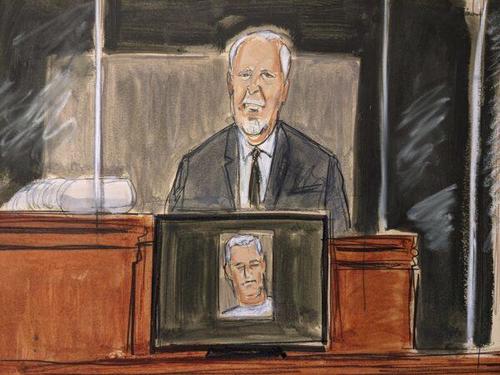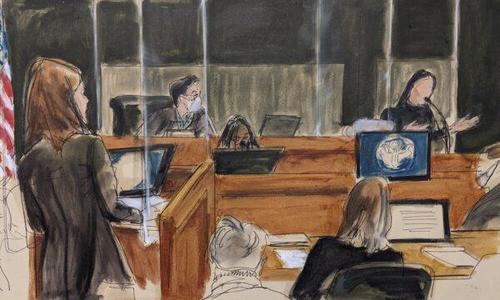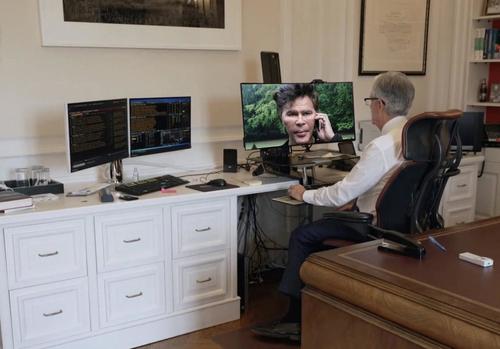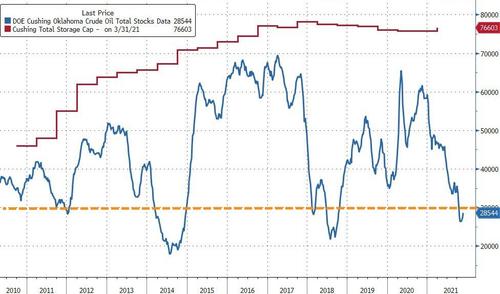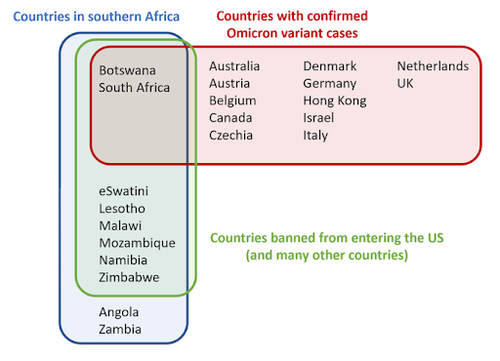Ghislaine Maxwell Joined In Sexual Encounters With Epstein, Accuser Testifies
Authored by Dave Paone via The Epoch Times,
The second day of the Ghislaine Maxwell trial started where the first day ended: with direct testimony from Jeffrey Epstein’s pilot, Lawrence P. Visoski, Jr.
U.S. Attorney Lara Pomerantz continued to ask Visoski how Epstein’s various residences, both domestic and international, were laid out.
Visoski had a very clear memory of each, including at times, square footage. The jury often saw photos of the lavish homes.
Then Pomerantz asked him questions about the layouts of Epstein’s various aircraft. Visoski specifically mentioned two types of couches on Epstein’s Boeing 727. The jury viewed photographs of the circular couch in which Visoski called the “round room.”
While Visoski often had meet-and-greets with passengers, he testified that the door to the cockpit was always closed during flights.
Visoski testified that he wrote up passenger manifests for each flight.
In this courtroom sketch, Lawrence Paul Visoski Jr., who was one of Jeffrey Epstein’s pilots, testifies on the witness stand during Ghislaine Maxwell’s sex trafficking trial in New York, on Nov. 29, 2021. (AP Photo/Elizabeth Williams)
Sometimes he only knew a passenger’s first name and if he didn’t know any name at all, he simply wrote male or female.
In order to maintain anonymity, Judge Alison Nathan has allowed witnesses to use either solely their first name or a made-up one.
One such witness will be Jane, who is an alleged victim of Epstein and Maxwell. Her alleged abuse started at age 14.
Visoski recalled meeting Jane once, aboard a plane, while it was still on the ground.
Upon cross-examination, defense attorney Christian Everdell had Visoski look at passenger manifests (not shown to the jury) where Jane’s actual name was listed, but with no last name, for three flights.
Visoski confirmed that there was an employee with the same first name and spelling. Visoski couldn’t confirm which one was on the flights.
Upon further cross-examination, Visoski testified that he never saw an underage girl on a flight without a parent, he had various interactions with passengers, and never saw any sexual activity, or evidence of sexual activity, on the planes.
Visoski also testified that he was never told by Epstein to remain in the cockpit and had the freedom to get coffee from the galley, which was located in the center of Epstein’s Boeing 727, and to use the lavatory in Epstein’s Gulfstream, which was located in the back of the cabin, far from the cockpit.
There was a lighthearted moment with Visoski commenting that all the talk about bathrooms was reminding him he needed to use one. The witness, the defense attorney, and the judge all had a laugh. The judge called for a short recess.
Visoski said some of the more well-known passengers on various flights included President Bill Clinton, Senators John Glenn and George Mitchell, violinist Itzhak Perlman, Donald Trump, Prince Andrew, Duke of York, Kevin Spacey, and Chris Tucker.
Visoski is the father of two girls, who were quite young when he worked for Epstein. He testified that both of them were often alone with Maxwell on Epstein’s Santa Fe, New Mexico ranch, where they played with the horses.
The pilot testified that if he knew of any misconduct with minors going on with people within the organization, he would never have allowed his daughters to associate with them and quit.
Visoski confirmed that years later, Epstein paid for tuition for his two daughters, for both private high school and college. Visoski testified that Epstein made the same offer to all his employees.
Epstein had also purchased several luxury cars (including a Jaguar) and registered them to Visoski for his personal use, but Visoski never felt the cars belonged to him.
Everdell and Visoski spoke about Visoski’s professional relationship with Maxwell. He testified he never saw anything to indicate she was abusing underage girls.
In addition to flying Epstein’s planes, Visoski installed home theater and audio equipment in all of Epstein’s residences.
The second witness for the prosecution was “Jane”—a pseudonym she said she prefers, in part to protect a 22-year acting career. She is the first of four women described as key accusers in the indictment against Maxwell.
In this courtroom sketch, assistant U.S. attorney Alison Moe questions an unidentified victim “Jane” about her experiences with Jeffery Epstein and Ghislaine Maxwell, in New York, on Nov. 30, 2021. (AP Photo/Elizabeth Williams)
The woman, now in her early 40s, testified about her father’s sudden death when she was 14, her “not great” home life, and how she was first approached by Maxwell at the summer camp for teens at the Interlochen Center for the Arts in Michigan.
She was 14 and she and her two brothers attended as well.
She recalled how she was eating ice cream with her campmates and Maxwell approached them, bringing her pet Yorkie along. Epstein soon joined them.
After her friends left, Jane continued to talk to Epstein and Maxwell. They explained they were benefactors to the camp and awarded scholarships to children. They asked her about her plans.
It turned out all three of them were from Palm Beach, Florida. At this point, Jane’s mother had lost the family house due to lack of funds and the family was living in someone’s pool house, with Jane and her mother sharing a bed.
Jane’s mother also started suffering from depression.
Just after the start of eighth grade, Jane and her mother were invited to Epstein’s Palm Beach estate for tea. Thus began regular visits to the house.
Invitations no longer included the mother. During one visit, Jane testified that while recreating around the pool, four women, plus Maxwell, were either topless or completely naked.
Maxwell, said Jane, showed an interest in Jane’s life and Jane viewed her as an older sister.
Epstein started giving Jane cash and gifts. Then he started buying her clothes and paying for voice lessons. One shopping trip included a stop at Victoria’s Secret.
Jane claims she had her first sexual encounter with Epstein in 1994, at age 14. He took her into the pool house, pulled his sweatpants down, put her on his lap and began to masturbate.
She said she told no one because she “felt gross and ashamed.”
Jane testified that she’d see both Epstein and Maxwell naked soon after.
She recalled when Epstein and Maxwell took her to his bedroom, took off their clothes and fondled each other. “There were hands everywhere,” said Jane.
Epstein asked her to take off her top.
Jane testified that there were more visits, each with more sexual contact. Maxwell introduced her to the “massage room,” and gave Jane instructions on how to massage Epstein, which included breast and penis touching.
Jane claims Epstein regularly touched her breasts and vagina, and Maxwell mainly touched her breasts.
Parties at the estate were orgies, with oral sex and “full-on intercourse,” said Jane.
The abuse continued through age 16, with Maxwell almost always being in the room.
Ghislaine Maxwell, the Epstein associate accused of sex trafficking, watches as Lawrence Visoski, longtime pilot of the late Jeffrey Epstein, is cross-examined during her trial in a courtroom sketch in New York City, on Nov. 30, 2021. (Jane Rosenberg/Reuters)
Jane claims Epstein flew her to his residences in New York City and to the ranch in New Mexico. Each location had a massage room where more sexual abuse took place.
“I felt very ashamed,” said Jane, and felt she’d get in trouble if she told anyone.
Jane said she never told her mother about the abuse because in her family discussing problems was a sign of weakness. They just didn’t talk about their feelings.
Epstein paid for Jane’s tuition at Professional Children’s School in New York City when she was 17.
The “massages” continued through high school, but finally broke off her relationship with Epstein when she moved to California for an acting job in 2002, at age 22.
Eventually, Jane filed two lawsuits, one against Maxwell and one against the estate of Jeffrey Epstein. She had also spoken to the FBI about Epstein in 2019.
However, she dropped the lawsuits after she received $5 million from the Jeffrey Epstein Victim’s Fund. (Her net was $2.9 million.)
Under cross-examination, Laura Menninger asked, “You waited 20 years to present your complaints to law enforcement, correct?” Jane replied, “Correct.”
Menninger confirmed that Epstein was dead and when Jane spoke to the FBI, she was accompanied by two personal injury attorneys.
Menninger attempted to find inconsistencies in Jane’s testimony but was interrupted by a constant stream of objections from the prosecution, most of which were sustained, making the last hour of the day a series of starts and stops while the objections were debated.
Once again, Nathan ended proceedings at 5:00 p.m. sharp.
Tyler Durden
Wed, 12/01/2021 – 11:25
via ZeroHedge News https://ift.tt/3DdiROD Tyler Durden

